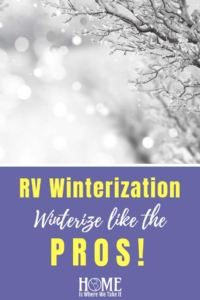
It’s almost that time of year…putting the camper away for winter. As we turn our attention from fall RV camping to the holidays and winter, it’s just about time for RV winterizing. Plan a morning or afternoon to get all of your RV winterizing checklist items marked off and done!
DUMP THE TANKS
Before you leave your last campsite, be sure to drain your black and grey tanks. Dump the black water first, as usual, then drain the grey water tank.
We purchased a Camco RV Swivel Stik for our RV since we don’t have an in-tank cleaner. This will be the last thing we do on our last camping trip (but that’ll be several more weeks for us).
If you do have an in-tank cleaning system, now would be a great time to use it! Rinse the black tank out as well as you possibly can to prevent odors from building up in the early spring months.
If you don’t have a long drive home from your last campsite, you could drain the fresh water tank at this time, too.
REMOVE ANYTHING THAT MIGHT FREEZE
We usually clean our camper each time we leave a campground. It just seems to make unpacking and even setting up next time easier. I will most likely take a few extra steps over the coming weeks to make this process easier.
For RV winterizing though, we step this up to a whole new level. We still do the normal sweep/mop/wipe countertops, etc. However, we like to take out any items that might freeze. This includes things like
- canned foods
- medicinals (even though most of their freezing temps are WAY below zero)
- drinks
- hair care products
- perishable food items
- dish detergent
- shower gels
- laundry detergent
- etc.
Hopefully, you get the point…remove EVERYTHING that contains water!
REMOVE LINENS & CLOTHING
Ok, so I admit, this RV winterizing tip might be a little overkill, but it’s better to be safe than sorry.
I met someone this year who took their camper home for the winter and found it infested with mice in the spring (it was parked near a barn all winter). Mice, bugs, and other pests will LOVE your linens for the same reason you do…they’re warm and comfy!
Another great reason for removing bed linens, towels, and clothing is to prevent mold and mildew. Winter months (especially here in the south) tend to get VERY humid (although, I’ve never lived anywhere else…I’d imagine winter is wet most everywhere). Water buildup can cause mold or mildew in materials.
Don’t forget about washcloths and hand towels.
RV WINTERIZING – WATER REMOVAL
I should begin this discussion by saying it will be best if you consult your owner’s manual before you begin ANY RV winterizing steps. Each RV make and model will be different from others and will surely have different steps.
Begin by making sure you are disconnected from any water supply hookups. Drain the fresh water tank if you weren’t able to do this when you left the last campground.
Check to make sure the water heater is off. Drain water heater by unplugging the water plug (again, consult your owner’s manual as to the location of your water heater and it’s plug). Leave the plug open until after blowing out the hoses.
Drain water lines from your washer/dryer if you have one.
All faucets including bathtub, showerhead, and sinks can be drained now. Be sure to close the valves when you’re done to save a step before blowing air into the hoses.
Hold down the flushing pedal on the toilet until the water has had time to exit the supply hose! Repairing the toilet valve IS NOT FUN!!!
Once you’re sure you have MOST of the water drained from your supply lines, get ready to blow them out with compressed air.
BLOWING OUT THE LINES
Install a blowout plug on your city water supply connection. Attach and turn on your air compressor. Be sure that you don’t allow the pressure to get over 50 PSI, but again CHECK YOUR OWNER’S MANUAL for your particular system’s needs.
Your water tank should begin dripping again as the water drains out from it. Once your water heater is drained, you can put the plug back in. Be sure to turn off the air compressor while you do this.
If your water heater has a bypass, now would be the time to turn the switch to bypass it (you guessed it, check your owner’s manual!). Turn the air compressor back on and go inside.
Turn on whichever faucet is closest to the water intake. Open the cold and hot water valves on each faucet, one at a time. Be sure to not forget to turn on the shower valve and let the shower supply line drain as well.
It might be important to mention if you have a faucet with one handle, remember to turn it to both the cold side, then to the hot side.
Repeat this procedure with any that has a water supply (including a clothes washer if you have one).
One last important thing to mention is to see if your camper has a low-point drain. If it does, be sure to drain them as well with the air pressure.
Now it’s safe to turn off the compressor, disconnect the blowout plug from your city water supply and store it until next year.
FILLING WATER LINES WITH ANTIFREEZE
There is some debate as to whether or not you need to do this if you blow out your lines, but if you’re in the tribe that decides to do this, let’s figure it out together.
Close water heater supply valve so as not to get water into your water heater…this is apparently BAD!
Locate fresh water tank and pump. You will need a winterization kit for this, so if yours doesn’t have one, you’ll need to get one and install it. By the way, these Amazon links have great, fast tutorials!
From this point, it’s just a matter of closing the fresh water tank valve which opens the siphon hose. Make sure the business end of the siphon hose is in the jug of RV antifreeze.
USE ONLY RV ANTIFREEZE because the other stuff is TOXIC! You’re putting this in your water supply system…TOXIC IS BAD PEOPLE!!! 🙂
Here is a link to concentrated RV antifreeze. Allow the antifreeze to flow from each faucet for several seconds. This will also fill the P traps under the sinks.
Once you’ve run antifreeze through the water lines, flush the toilet and let a cup or so flow into the black tank. Now you should be done with the water system at this point. You don’t want either of your waste tanks to be completely empty as this is apparently bad for the seals and such. I’m sure after adding antifreeze, you’ll have a little in both tanks.
LAST STEPS
This is a great time to take care of some other maintenance items before your RV sits all winter unused. Here’s a quick punch list of a few more things to do:
- Apply slideout lubricant on each slideout. You don’t want them drying out over winter.
- Check out the roof for any leaks and seal them. This is also a great time to check the AC cover for any cracks and plumbing vents.
- Look for any possible rodent entrances and seal them up with steel wool or expanding foam insulation.
- Wash and wax your camper. Clean awning at this time, too.
- Check battery fluid levels & fill if needed.
- Pull shades inside the camper or cover your camper.
- Check tire pressure and cover tires.
At this point, your baby should be ready for winter. You can always opt to keep your camper in a garage or some other heated/cooled storage facility to avoid these steps. However, if you plan on storing it outside, these RV winterizing steps are an ABSOLUTE MUST!
Protect it from the elements as much as possible. As mentioned in my RV repairs article, YouTube is a great resource for how-to winterize videos. As soon as we winterize our camper, we will post our own video. I found this one to be really helpful:
Do you have any extra RV winterizing steps? I’d love to hear from you in the comments!
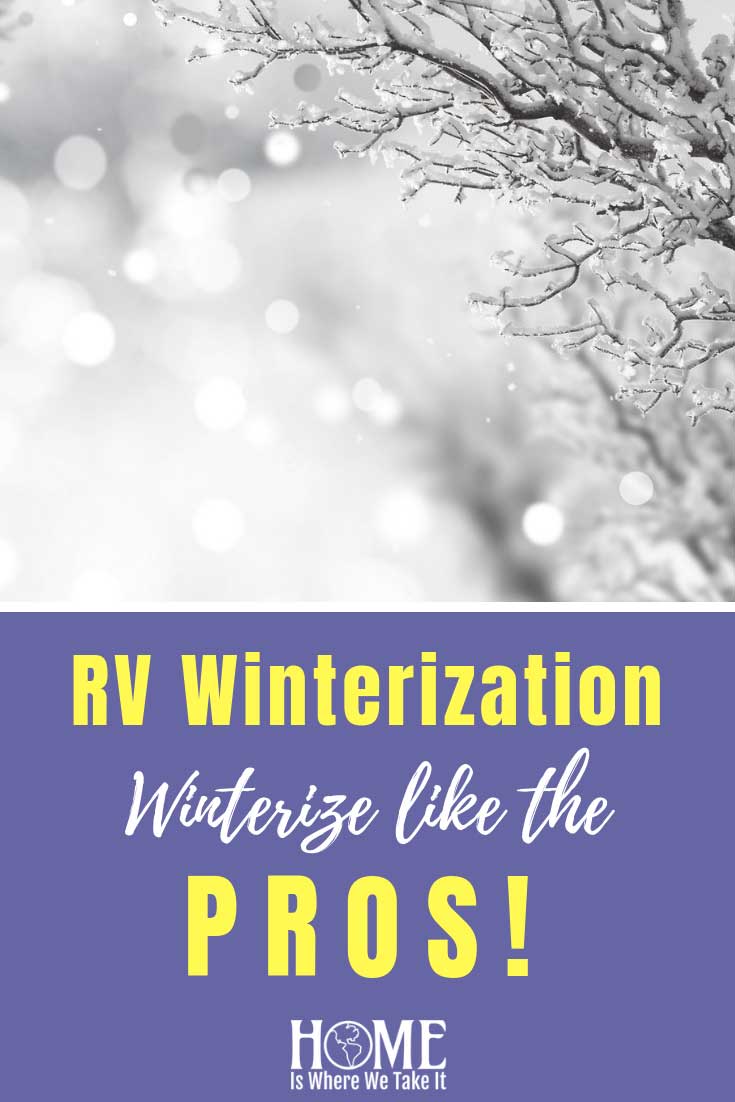

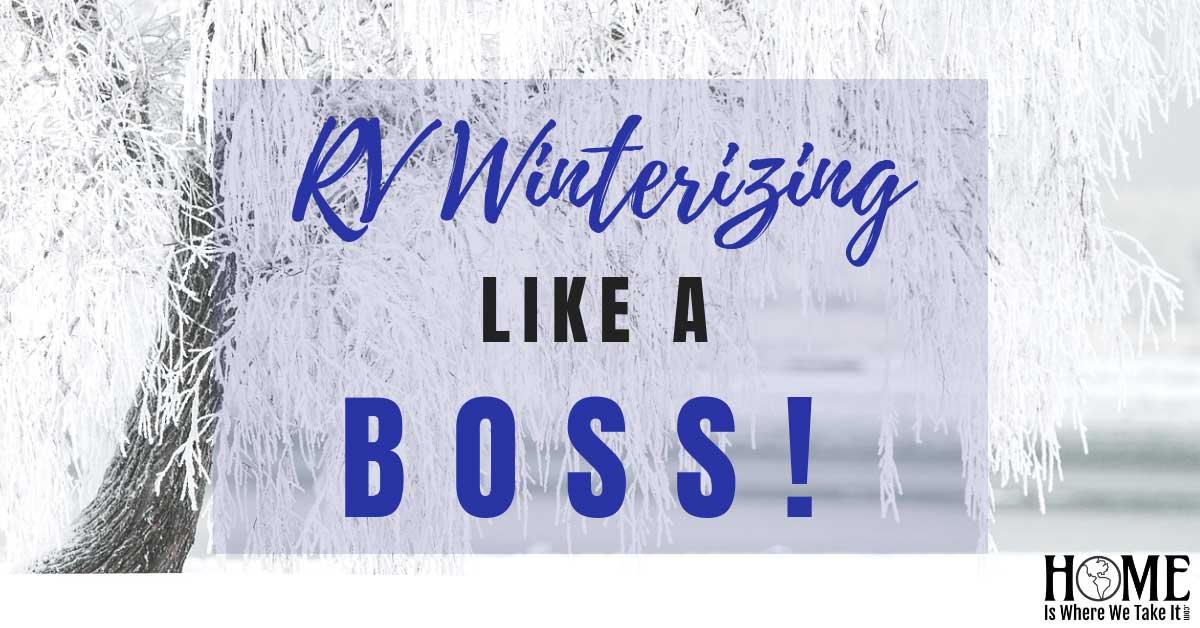
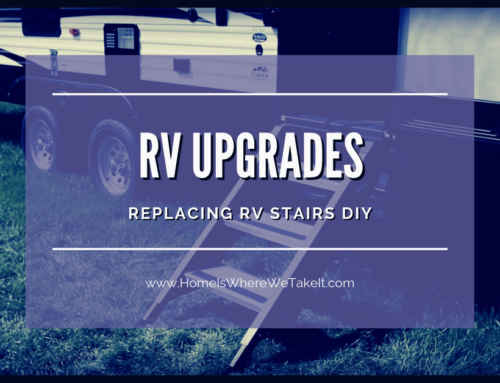
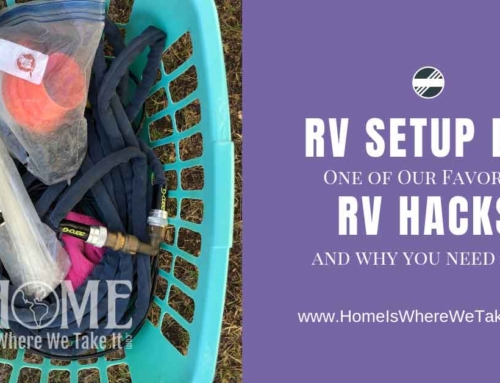
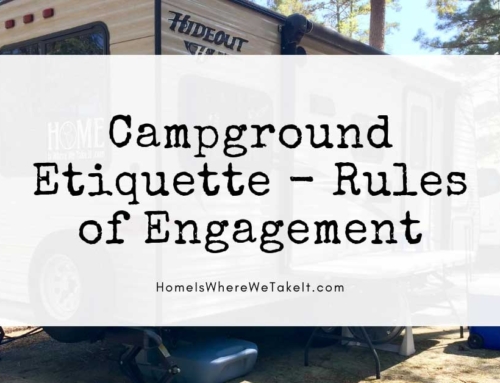
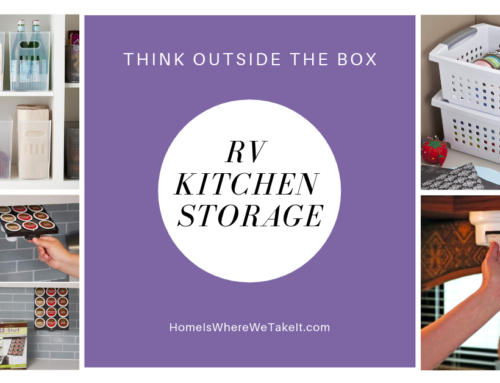


[…] months are great for longer trips south…or it’s a great time for winterizing and maintenance! Spring is a GREAT time for outdoor activities like hiking and biking, digging for […]
To ensure that your winter camping is very safe and relaxing, you will need to prepare your RV both internally as well as externally to ensure that it is set for the cold weather. By preparing your camper for harsh weather, you can protect your engine and other RV components from freezing and other damage. Also an adequately protected RV will keep your RV leak free and make your winter camping experience more comfortable and enjoyable.